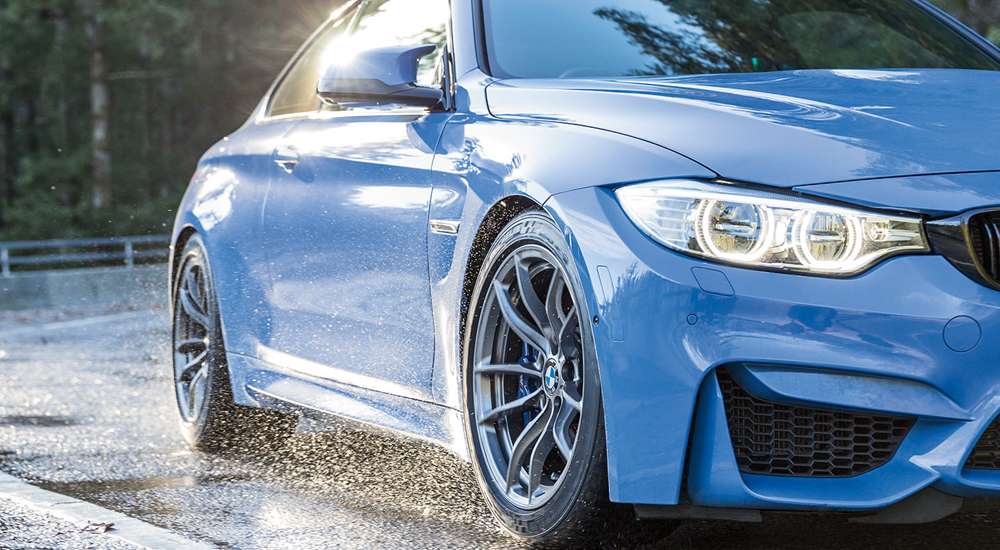
SHOULD I FIT NEW TYRES TO THE FRONT OR REAR?
Why Fit New or the Least Worn Tyres to the Rear?
New or the least worn tyres should be fitted to the rear to ensure that vehicle stability is maintained in extreme conditions of braking and cornering, especially on wet or slippery roads and to provide additional protection against the effects of a sudden deflation.

Fig. 1: Front tyres worn out
Most modern vehicles being front drive, the front tyres wear faster than the rear tyres. The driver is used to having less grip at the front as the tyres wear towards repacement as in fig.1.

Fig. 2:
If new tyres are fitted to the front as in fig. 2:
- The car’s handling characteristics will change and the driver could be taken by surprise – where previously there was a tendency to under-steer, the car could tend to over-steer in extreme conditions.
- On slippery roads, initial loss of grip will be on the rear axle, leading to over-steer, which can be more difficult to control than under-steer.

Fig. 3:
If new tyres are fitted to the rear as in fig. 3:
- The handling characteristics will be similar to those to which the driver is accustomed.
- There will be maximum grip on the rear axle – a safer and more stable condition.
Whilst taking this advice into consideration, do not forget:
- State of wear of the rear tyres.
If the tyres are nearly new, they can be left where they are.
If the tyres are quite worn, consider replacing them rather than moving them to the front of the vehicle.
2. How and where the vehicle is being used.
New tyres may need to be fitted on the driven axle if traction is important – for example, in the countryside, on farm vehicles or snow tyres on the cars with front wheel drive.
3. If moving tyres from one axle to another, pressure should be adjusted to suit the new positions, thus maintaining the handling, balance and safety of the vehicle.




